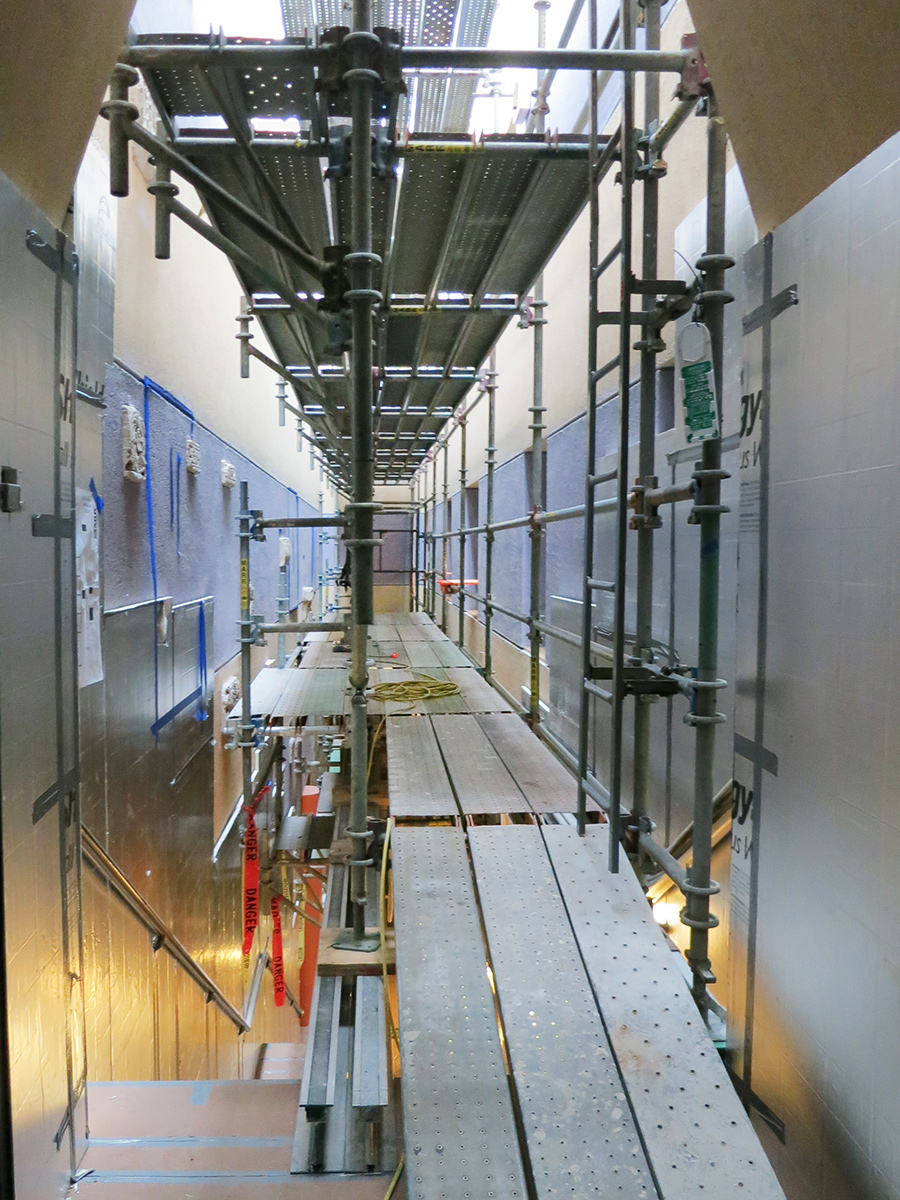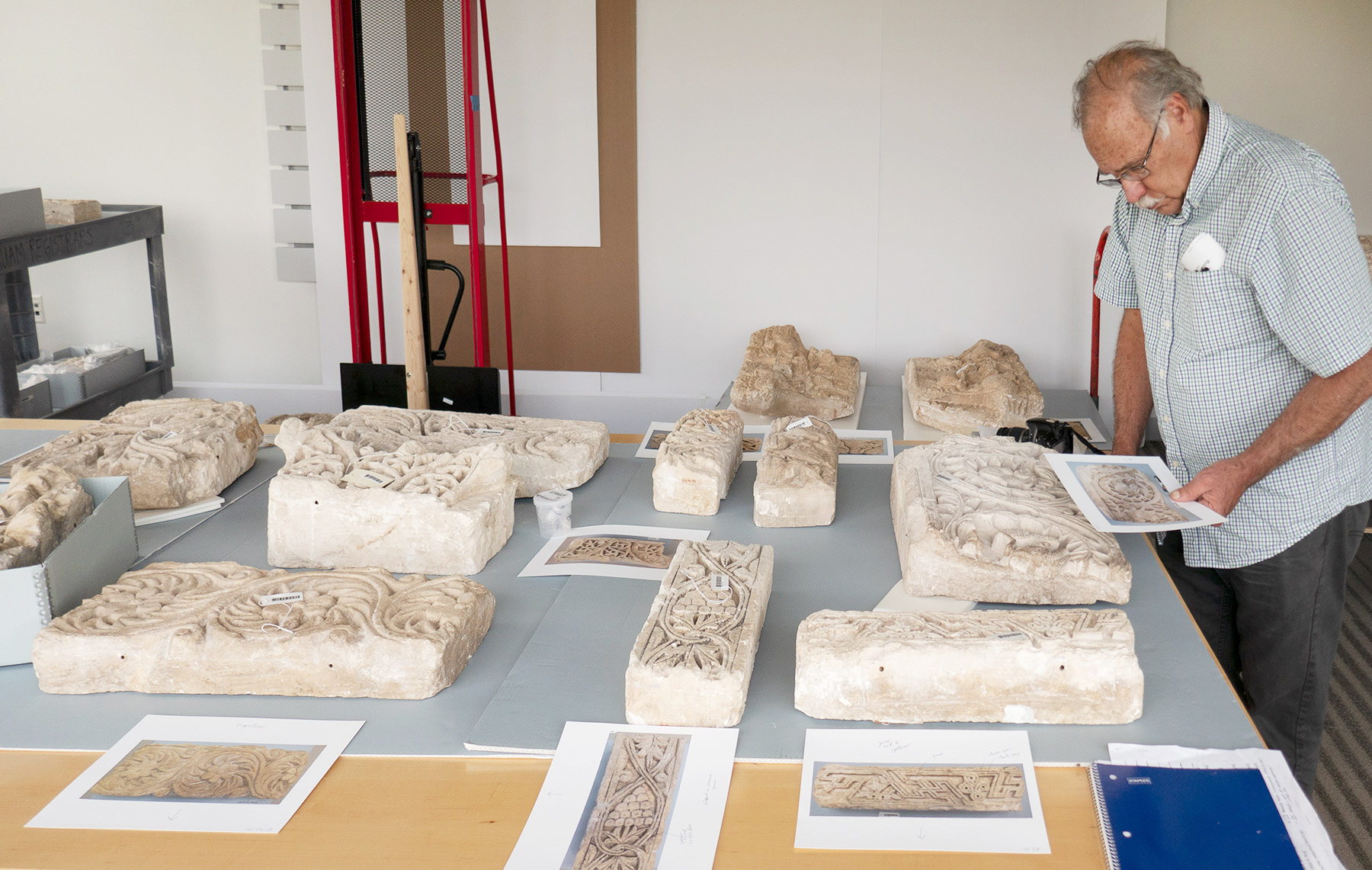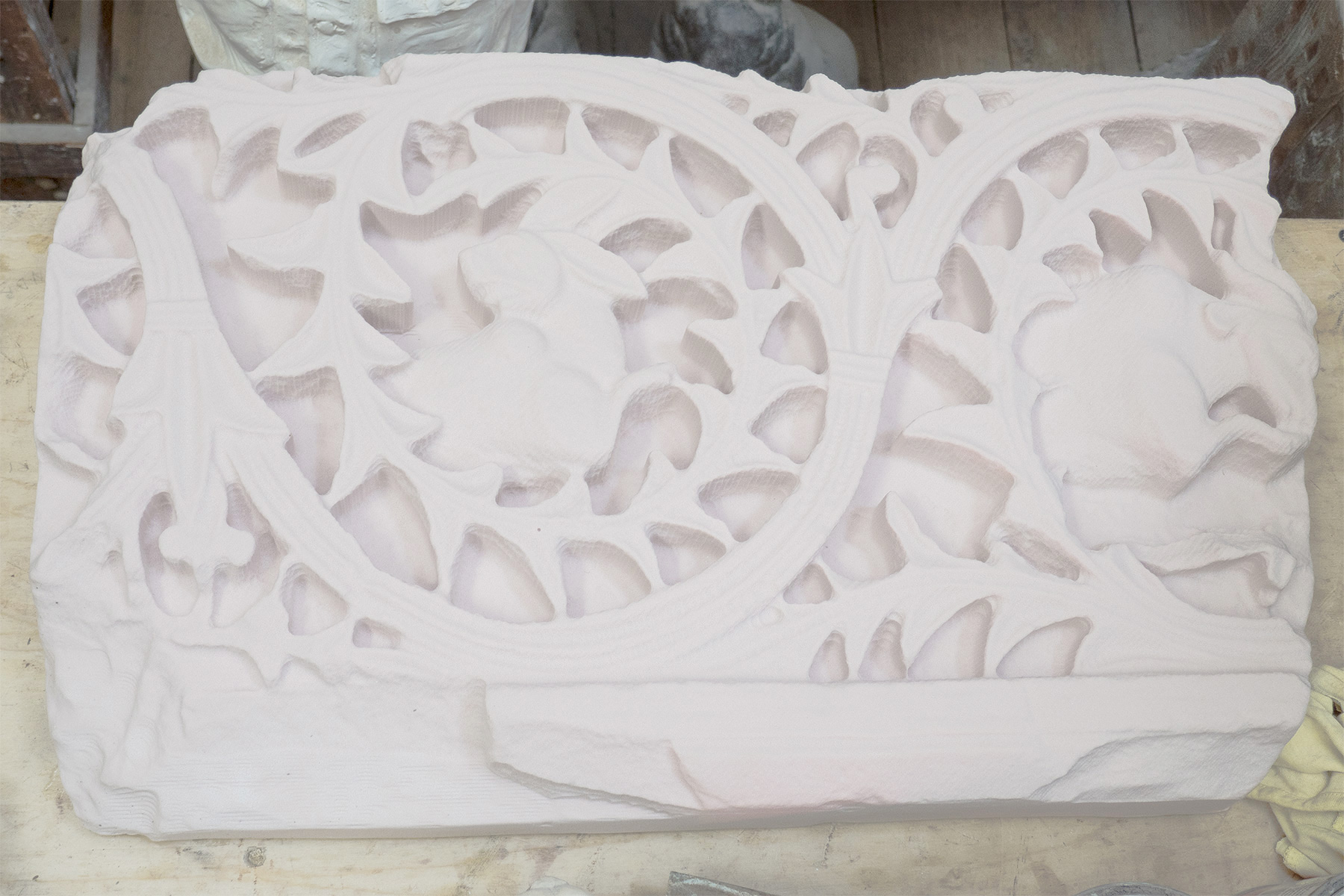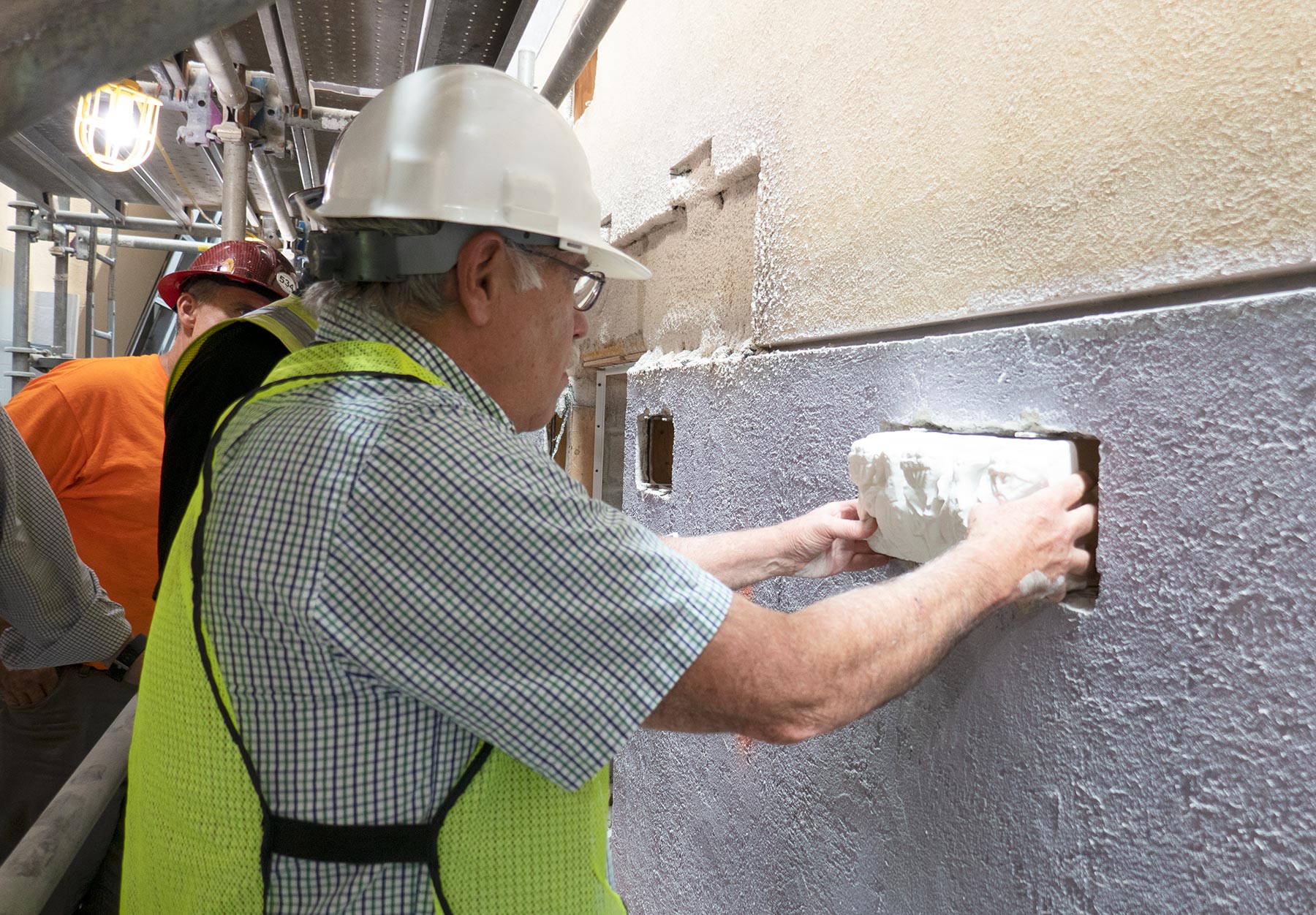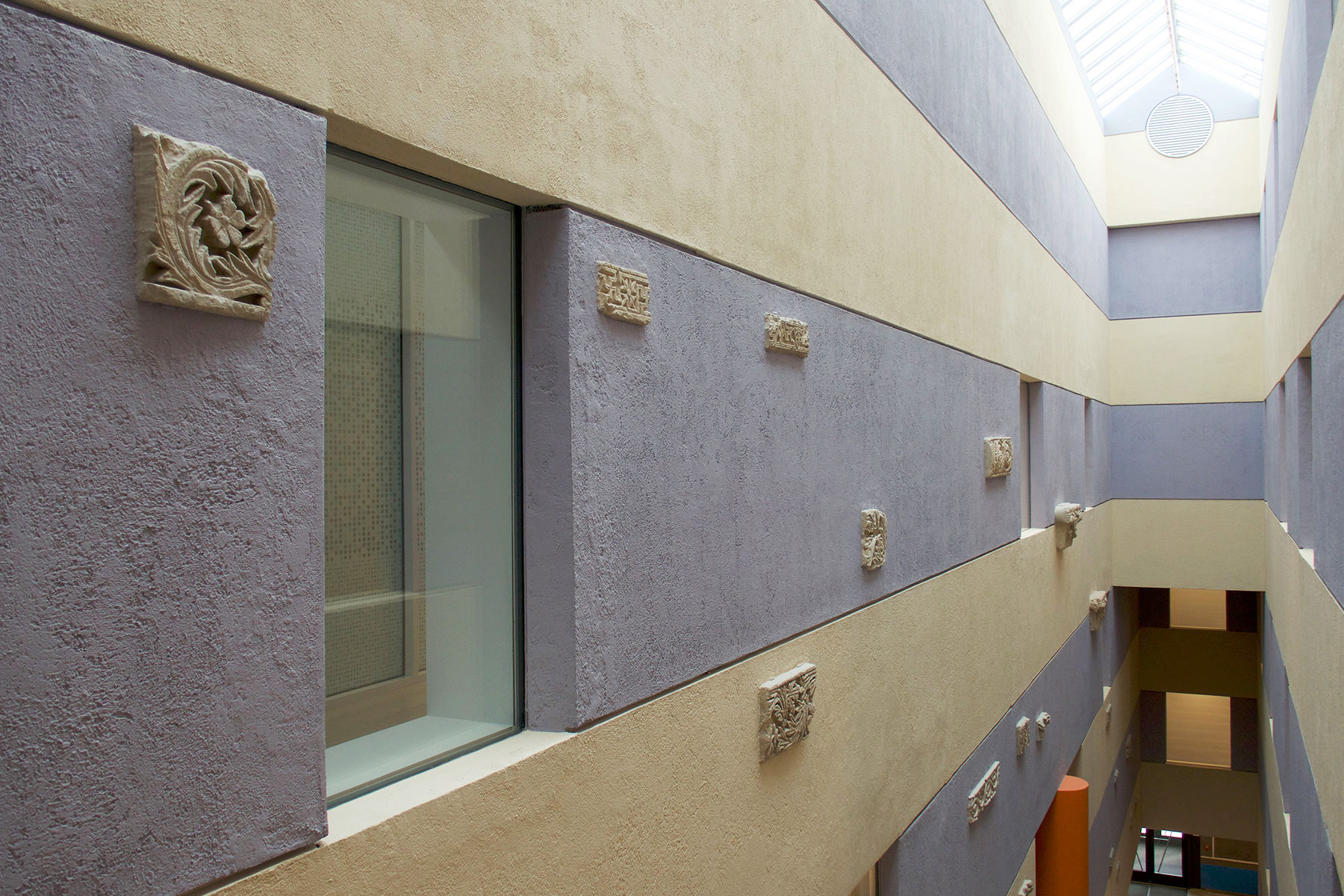It was an undertaking that corralled diverse talents and trades. Curators and conservators, painters and fabricators, art handlers and decorative painters all seamlessly collaborated to preserve the selection of sixth-century Coptic architectural fragments installed in the main stairway of Harvard’s Arthur M. Sackler Building.
Visitors to the renovated Sackler Building will surely admire the 20 ornately carved limestone architectural fragments situated along the lavender and yellow wall as they walk up the stairs. But all will not be as it seems: the fragments are reproductions, fashioned from lightweight plastic using state-of-the-art 3D printing. The originals are now housed safely at the Harvard Art Museums.
When British architect James Stirling designed the Sackler Building in the early 1980s, he wanted the staircase to feature a selection of original works that would reflect the character of the broader collection of Asian, ancient Mediterranean and Near Eastern, and Islamic and later Indian art on display upstairs. (The Sackler Building was the original home of the Arthur M. Sackler Museum, which is now part of the renovated and expanded Harvard Art Museums facility.) “Stirling envisioned a dramatic display of Coptic art,” said Angela Chang, conservator of objects and sculpture and assistant director of the museums’ Straus Center for Conservation and Technical Studies.
The renovation of the building, which is included on Harvard’s “notable interiors” list, initially called for the fragments to remain in place. But Chang and a multidisciplinary planning committee quickly realized that it would be better for the original fragments to be in the museums across the street, preserved for future display and education. Installing visually indistinguishable reproductions would still honor Stirling’s vision and allow for continued enjoyment and appreciation by the many who pass through the space.
“When we first started thinking about the fragments, we were worried because they are so delicate,” said Susanna Baker, senior project manager with Harvard Capital Projects. “The staircase required not just renovation but significant structural updates; the fragments would have to withstand a year and a half of the intense vibrations and fluctuating temperatures that accompany construction work.” Besides that, some of the fragments weigh several hundred pounds each and would be situated within an active work site—a challenge for logistics as well as for liability and security.
Given these circumstances, the working group was concerned that construction would “potentially damage or compromise the pieces,” said Baker. The fragments, they determined, would need to be removed and a plan devised to ensure the safety of these fragile ancient objects.
Part of the careful collaboration to remove the fragments involved setting up a system of scaffolding that could accommodate a range of subcontractors from different trades and with various specialties. Additionally, a dedicated rigging system was required to move the heavy objects. The system worked perfectly, allowing the fragments to be slid out of interior window openings and lowered onto dollies for transfer to secure storage.

